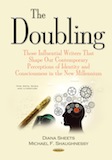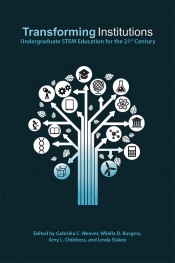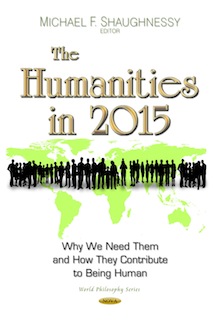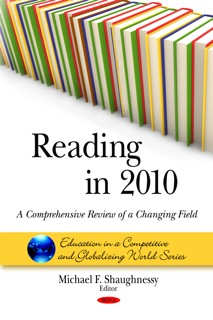Obama's 2012 Victory: The Demographic Becomes the Narrative
Copyright © 2012 Diana E. Sheets
Since 2008 commentary about presidential campaigns has been saturated in the rhetoric of narrative. Democratic strategists have argued, dating back to the second Clinton administration, that the reason they lost elections is because the Republicans told a better narrative (see my 2008 essay, “Politics & Literature: Framing the Political Narrative for Victory in the 2008 Presidential Election,” http://www.literarygulag.com/blog/show/22). Their argument was—and remains—simple. To win an election, presidential candidates have to present the best story. Stories are emotionally convincing, tapping into our subconscious worldview. Find that vital connection, so it goes, and voters will be swayed.
However, Obama’s 2012 presidential victory wasn’t, strictly speaking, based on his narrative. The Obama administration hadn’t produced a booming economy, hadn’t addressed our looming debt, and hadn’t alleviated concerns about Obamacare, which threatened to become the proverbial Sword of Damocles, rather than a panacea to our nation’s woes. Then, of course, there was America’s continuing military presence in the Middle East, the growing instability of that region, the Libyan fiasco, and by 2012 even the specter of blaming George W. Bush felt dated. How, then, to run a successful campaign when the 2008 mantras of “Hope” and “Change” seemed frazzled?
Because of a lack of a convincing narrative, the Obama politicos chose to demonize Mitt Romney. He was depicted as a one percenter, someone lacking in human feelings who couldn’t understand, let alone remedy, your pain. Romney’s policy prescriptions were characterized by the Obama operatives as supportive of corporate America and the wealthy “fat cats,” rather than addressing the needs of struggling Americans. Thus, the 2012 Obama campaign was waged on class warfare, a mandate for redistributing assets from the wealthy to the neediest, and, of course, the demonization of Mitt.
Nevertheless, attack ads, while emotionally hard hitting, aren’t, strictly speaking, campaign narratives. Extreme vilification might sway voters against Mitt Romney, but it wouldn’t necessarily motivate left-leaning Americans to go to the polls in order to vote for Obama and the Democrats.
So what happened? The Obama campaign focused strategically on offering specific policies or programs that targeted the new demographic—the multicultural America that looked to governmental intervention to meet their economic, educational, healthcare, and, yes, emotional needs. This meant ensuring a governmental mandate to address immigration, the issues of single women, the concerns of Hispanics, African Americans, Asian Americans, the rights of lesbian, gay, bisexual, and transgendered (LGBT) Americans, the supporters of trade unions, and those ordinary folks struggling to find jobs or keep the ones they had.
Obama was re-elected. He obtained 126 more electoral votes than Romney while securing nearly a 3 percent advantage in the popular vote (http://www.politico.com/2012-election/map/#/President/2012/). This was accomplished by waging a successful campaign to capture this multicultural demographic. The victory was significant enough to quell all rumors of legal challenges.
In terms of ethnic or minority representation, exit polls indicate Obama’s share of the vote was overwhelming. He captured 71 percent of the Latino vote in contrast with only 23 percent for Romney. The president garnered 93 percent of African-American men and 96 percent of African-American women. He received 73 percent of the Asian vote (Rosa Ramirez, “10 Amazing Demographic Percentages of the 2012 Election,” National Journal, November 9, 2012, http://mobile.nationaljournal.com/thenextamerica/politics/10-amazing-demographic-percentages-of-the-2012-election-20121109). The Senate remains Democratic having secured a net gain of two seats. The House is still dominated by Republicans, despite incurring a net Republican loss of 6 seats. Republicans continue to dominate the gubernatorial landscape with a net gain of one, making their total 30 Republican Governors as compared with 19 Democrats (http://www.politico.com/2012-election/map/#/President/2012/). Thus, while Obama won the electoral and popular vote for president, the overall election results suggest that as a nation we remain divided.
Electoral demographics have become the driving force of the last two presidential elections. Back in 2008, when Literary Gulag published “Barack Obama’s Postmodern Presidency and the Implications for Policy” (http://www.literarygulag.com/blog/show/39), I discussed Peter Brimelow and Ed Rubenstein’s 1997 article “Electing a New People” published in National Review which begins with the fateful sentence: “Demography is destiny in American politics.” The authors forecast 2008 as the year when a shift in ethnic demographics would ensure the Republican Party’s inexorable slide to “minority status” (“Electing a New People, National Review, June 16, 1997, 32, 34, http://tinyurl.com/aw3zsek).
Obama is the first Democratic president since Franklin Delano Roosevelt (1944) to win the popular vote by more than 50 percent in his re-election (John Nichols “Obama’s 3 Million Vote, Electoral College Landslide, Majority of States Mandate,” The Nation, http://www.thenation.com/blog/171178/obamas-3-million-vote-electoral-college-landslide-majority-states-mandate#). While many progressives, Nichols included, will assess this in glowing terms, Obama’s victory was determined more by changing voter demographics than a groundswell of popular support across the ethnic and social class divide.
What, then, do the demographics of the 2012 presidential election indicate? Nonwhites represented 28 percent of the 2012 electorate in contrast to just 20 percent in 2000. Obama received 80 percent of the nonwhite vote in both 2008 and 2012. Then consider the changing demographic of white, male voters who represented only 34 percent of the votes cast in the 2012 election as compared with 46 percent in 1972 (Nancy Benac & Connie Cass, “Face of US changing; elections to look different,” Associated Press, as published in San Diego Union-Tribune, November 10, 2012, http://www.utsandiego.com/news/2012/nov/12/face-of-us-changing-elections-to-look-different/?ap). In 2012 these white men chose Romney over Obama by 27 percent (62 versus 35 percent, respectively). Caucasian women voted for Romney over Obama by 56 versus 42 percent, respectively, a higher percentage than white women who voted for either McCain in 2008 or Bush in 2004 (John Cassidy, “What’s Up with White Women? They Voted for Romney, Too,” The New Yorker, November 9, 2012, http://www.newyorker.com/online/blogs/johncassidy/2012/11/why-white-women-voted-for-romney.html).
Today, single women vote Democratic by a margin of 54 percent in contrast to 36 percent of married women. The single women’s vote was strategically significant since it accounted for nearly a quarter of all voters (23 percent) in the election. White voters favored less government (60 percent), Hispanics wanted more (58 percent), and, by comparison, blacks were the most interventionist of these ethnic groups (73 percent). Hispanics represented a significant and growing share of prospective voters in the Western battleground states. In 2000, for instance, white voters constituted 80 percent of voters in Nevada. But by 2012 their percentage of the total vote had declined to 64 percent while the Hispanic vote had increased by 19 percent. Not surprisingly, 70 percent of Hispanics voted for Obama in Nevada (Benac &Cass).
The youth vote sided decisively with Obama. In the case of North Carolina, a battleground state that narrowly supported Romney, two-thirds of these voters supported Obama. Younger voters are also more ethnically diverse. Of all Americans under 30 who voted in the election, 58 percent are white as compared with 87 percent of seniors who voted (Benac & Cass).
“The new electorate,” as Paul Taylor, who works for the Pew Research Center, commented, “is a lagging indicator of the next America.” He added, “We are midpassage in a century-long journey from the middle of the last century, when we were nearly a 90 percent white nation, to the middle of this coming century, when we will be a majority minority nation” (Benac & Cass). Or as William H. Frey, a demographer for the Brookings Institute noted, “Finally, the politics is catching up with the demography” (Benac & Cass).
Just how significant are these numbers? Ryan Lizza, writing for The New Yorker, quoted Bill O’Reilly, a Fox News commentator, before Obama was reelected.
It’s not a traditional America anymore. And there are fifty per cent of the voting public who want stuff. They want things. And who is going to give them things? President Obama. He knows it and he ran on it. Whereby twenty years ago President Obama would have been roundly defeated by an establishment candidate like Mitt Romney. The white establishment is now the minority. . . . You’re going to see a tremendous Hispanic vote for President Obama. Overwhelming black vote for President Obama. (Ryan Lizza, “The Party Next Time,” The New Yorker, November 19, 2012, http://tinyurl.com/awe9d9m).
As Lizza noted, three-fifths of white voters selected Romney. That figure equaled or exceeded the support that Reagan and H.W. Bush had received from white voters in 1980 and 1988, respectively. But if the white electorate was 87 percent of voters in 1992, by 2016 they will represent less than 70 percent of American voters. As the demographic landscape of our country changes, even conservative strongholds such as Texas will be at risk and the political outcomes potentially seismic. Ted Cruz, a newly elected Senator from Texas who campaigned from a “secure-the-borders” perspective that resonates with Lone Star Republicans, expressed it this way to Lizza.
In not too many years, Texas could switch from being all Republican to all Democrat. . . . If that happens, no Republican will ever again win the White House. New York and California are for the foreseeable future unalterably Democratic. If Texas turns bright blue, the Electoral College math is simple. We won’t be talking about Ohio, we won’t be talking about Florida or Virginia, because it won’t matter. If Texas is bright blue, you can’t get to two-seventy electoral votes. The Republican Party would cease to exist. We would become like the Whig Party. Our kids and grandkids would study how this used to be a national political party. ‘They had Conventions, they nominated Presidential candidates. They don’t exist anymore’ (Lizza, The New Yorker, http://tinyurl.com/awe9d9m).
Condoleezza Rice served as Secretary of State under George W. Bush. Today, she represents the Republican Party’s most prominent black, female supporter. Following the party’s defeat in the 2012 presidential election, she commented about how critical it is to ensure that the Republican Party becomes more inclusive: “Clearly we are losing important segments of that electorate and what we have to do is to appeal to those people not as identity groups but understanding that if you can get the identity issue out of the way, then you can appeal on the broader issues that all Americans share a concern for” (Benac & Cass).
Barack Obama and his team of advisors ran a tactically brilliant campaign. Yes, it was a bitterly fought election. All told, the costs of 2012 election campaigning waged by presidential candidates, prospective Governors, and men and women running for the Senate and House are projected to total in excess of $6 billion. According to the Center for Responsive Politics, that’s a whopping $700 million increase since 2008. Super-PACs, including Restore Our Future and Priorities USA Action, in addition to related entities including Crossroads GPS, as well as organizations such as the U.S. Chamber of Commerce are, according to the Center for Responsive Politics, projected to have spent nearly $1 billion on the 2012 election. That figure will exceed by a factor of three the expenditures made by external groups four years earlier. As of the end of October, the Obama campaign had allocated $553 million on the 2012 election as compared with Romney’s $360 million (Jonathan D. Salant, “Election Costs to Exceed $6 Billion in 2012, Research Group Says,” Bloomberg News, October 31, 2012, http://www.bloomberg.com/news/2012-10-31/election-costs-to-exceed-6-billion-in-2012-research-group-says.html).
Obama’s victory wasn’t based on a narrative since that would have exposed the economic failings of his administration. Instead, the campaign demonized Mitt Romney by appealing to the “diversity values” of the Democratic rank-and-file while saturating the battleground states with attack advertisements. The party appealed to a multicultural mosaic: Hispanics, single woman, African-Americans, ethnic minorities, young people, as well as many of the economically disenfranchised who voted, as well as a significant number of affluent progressives and, of course, the LGBT community.
The Democrats strategically targeted their demographic and the demographic became the narrative. “In sports parlance,” as I have noted on The Huffington Post (“Obama’s ‘Kingdom of Virtue’ All Is Fair In Political Warfare Though Victory May Be Fleeting,” http://www.huffingtonpost.com/dr-diana-e-sheets/obamas-kingdom-of-virtue-_b_2156587.html), “Obama’s ‘ground game’ was hard-hitting and decisive. The demonization against Romney began early and never stopped. Even before he was the designated Republican candidate, the Obama machine had Romney effectively in their sights. All is fair in political warfare. And this Democratic victory was supremely won.”









